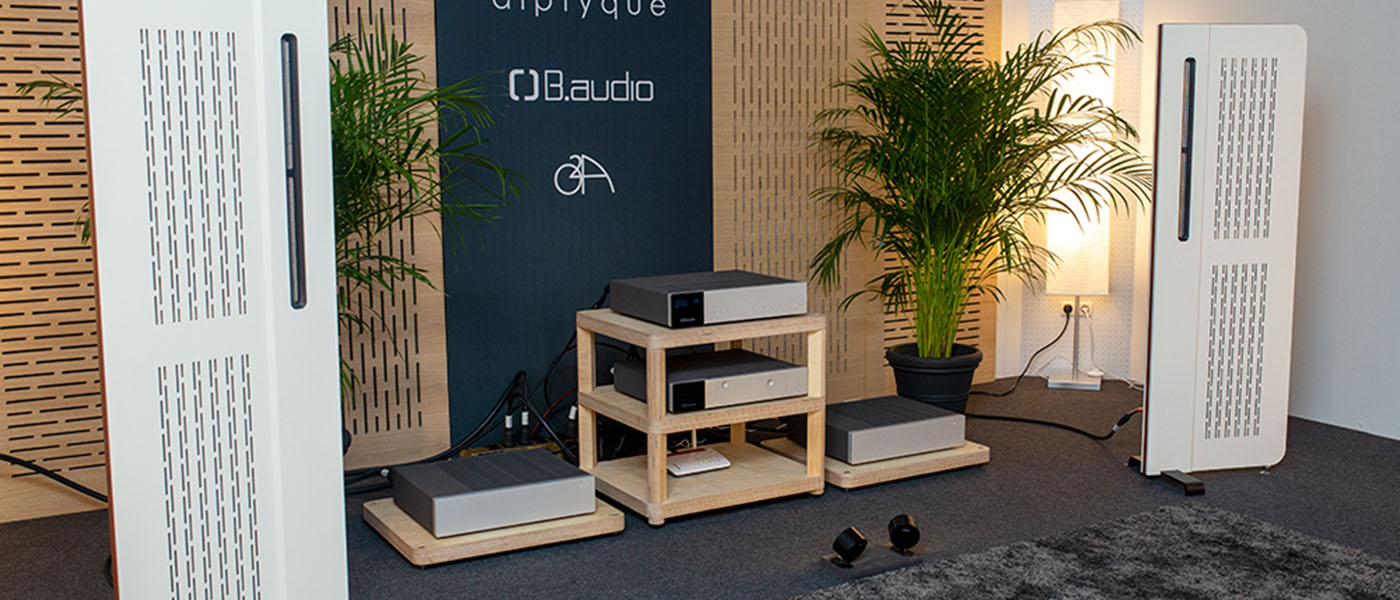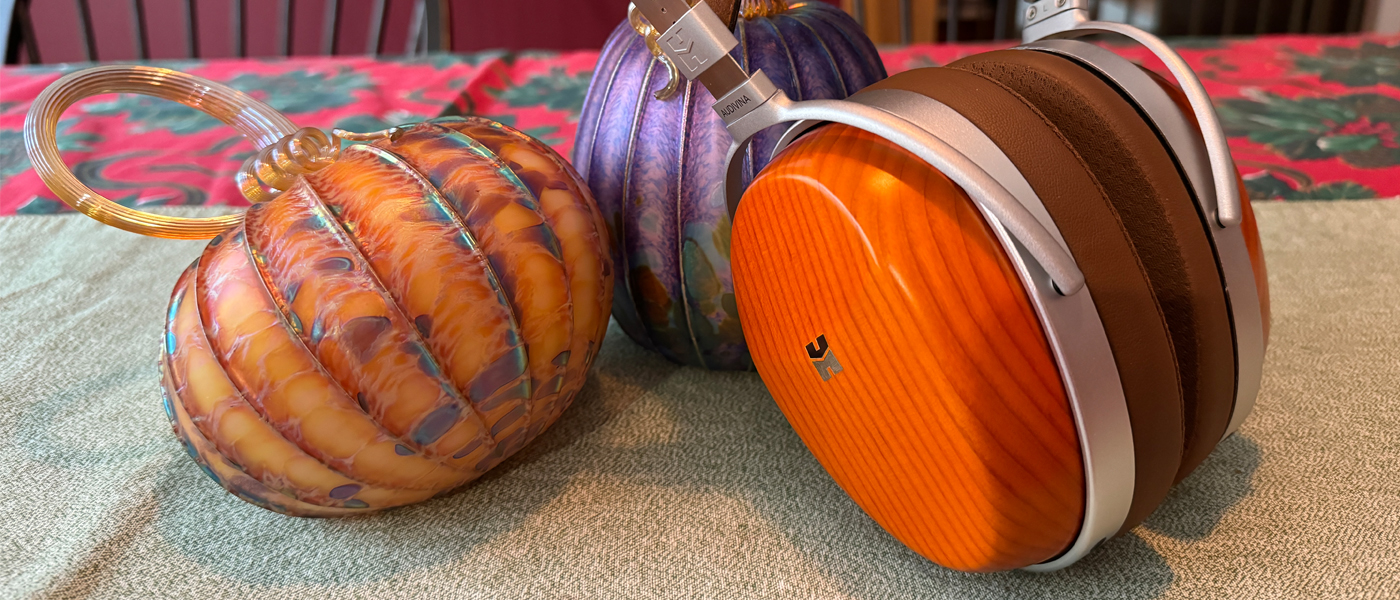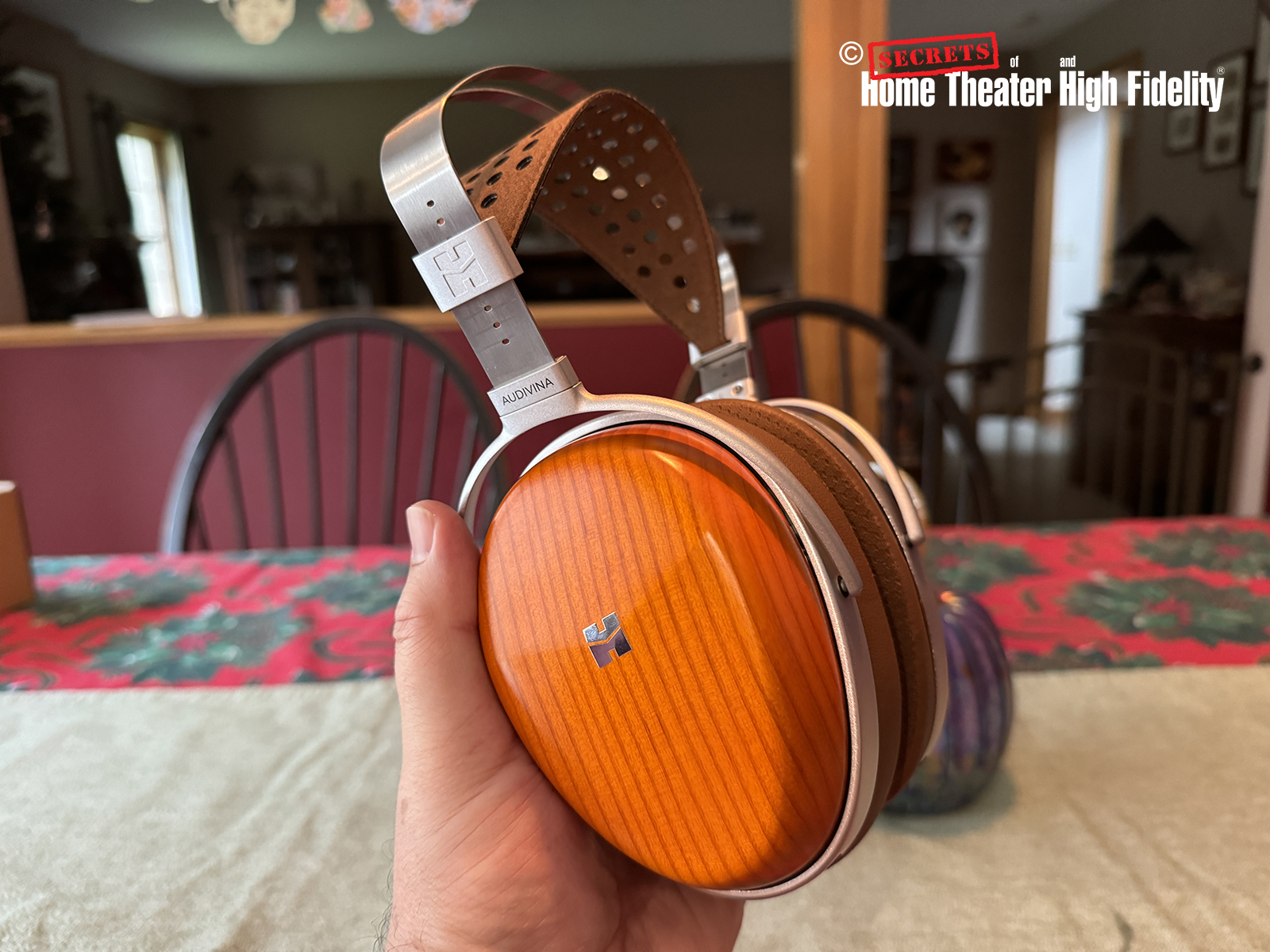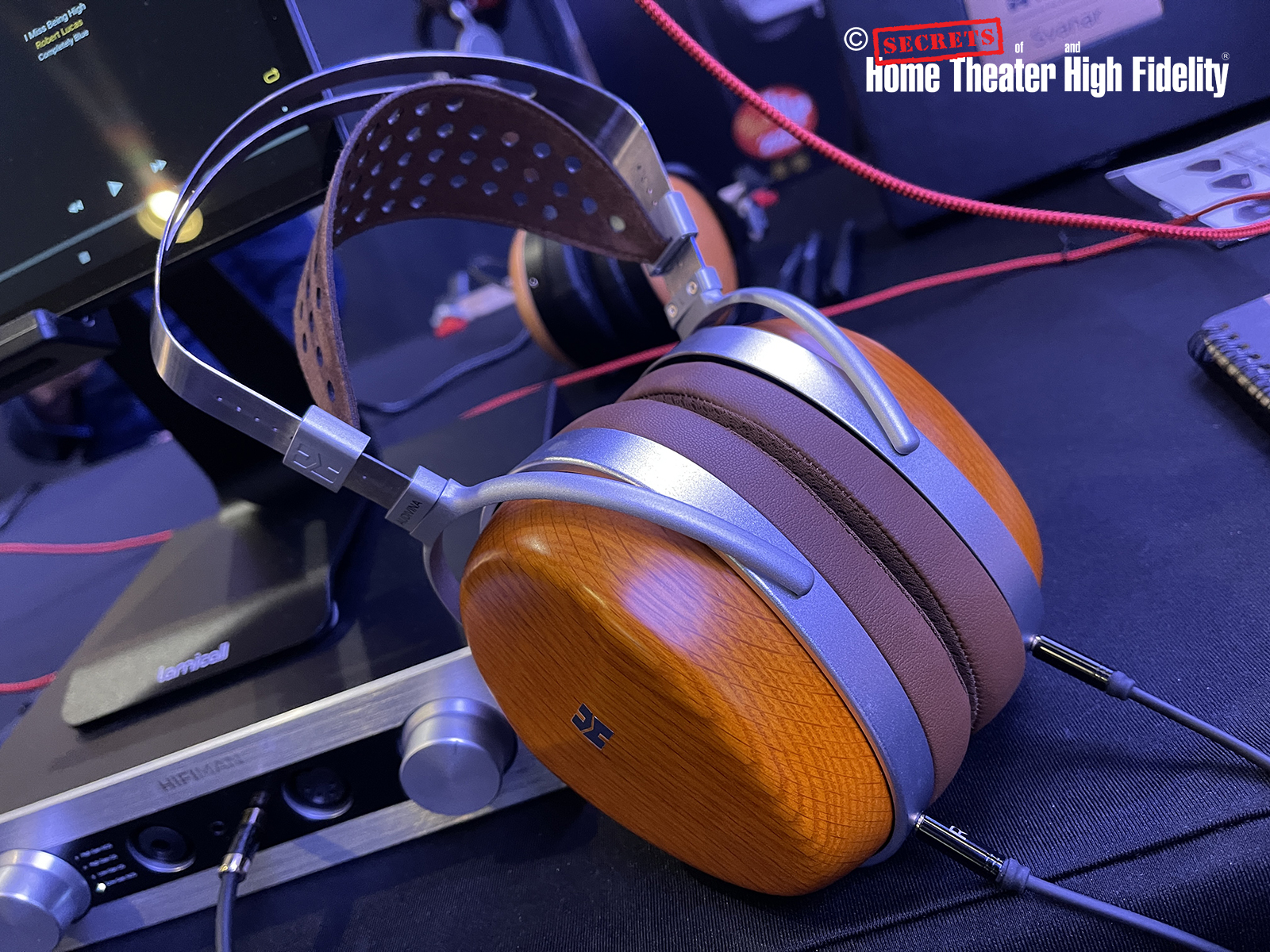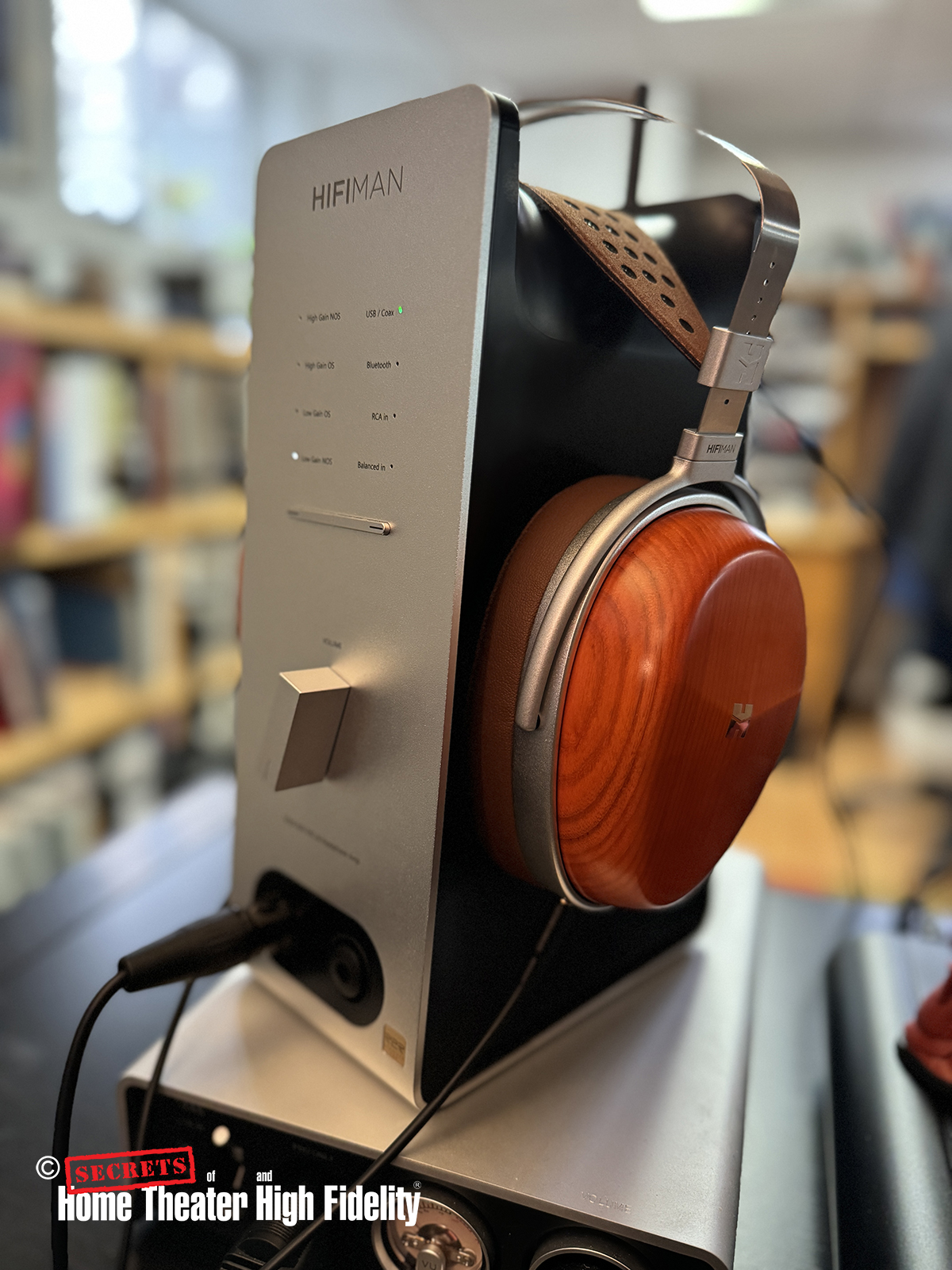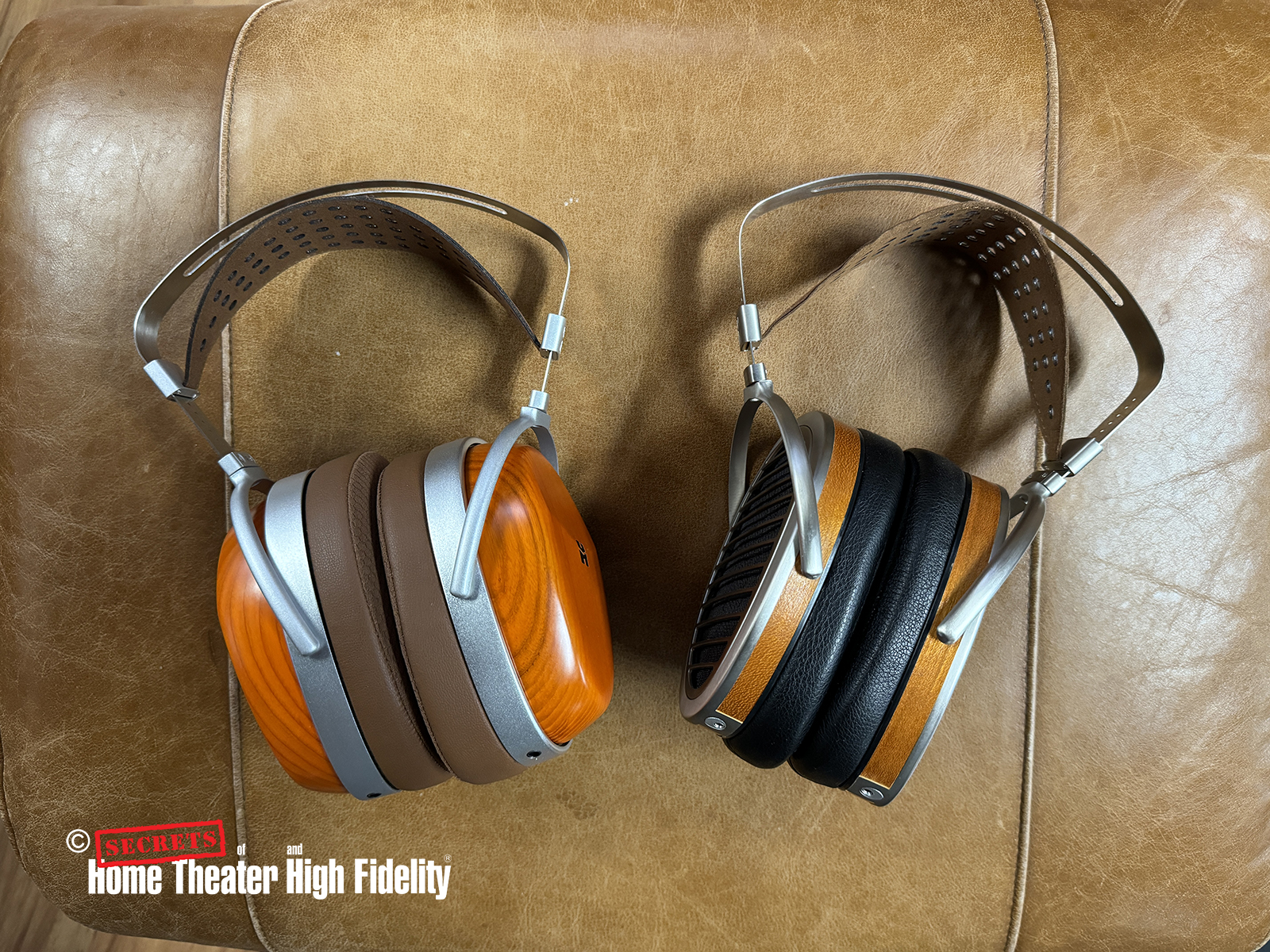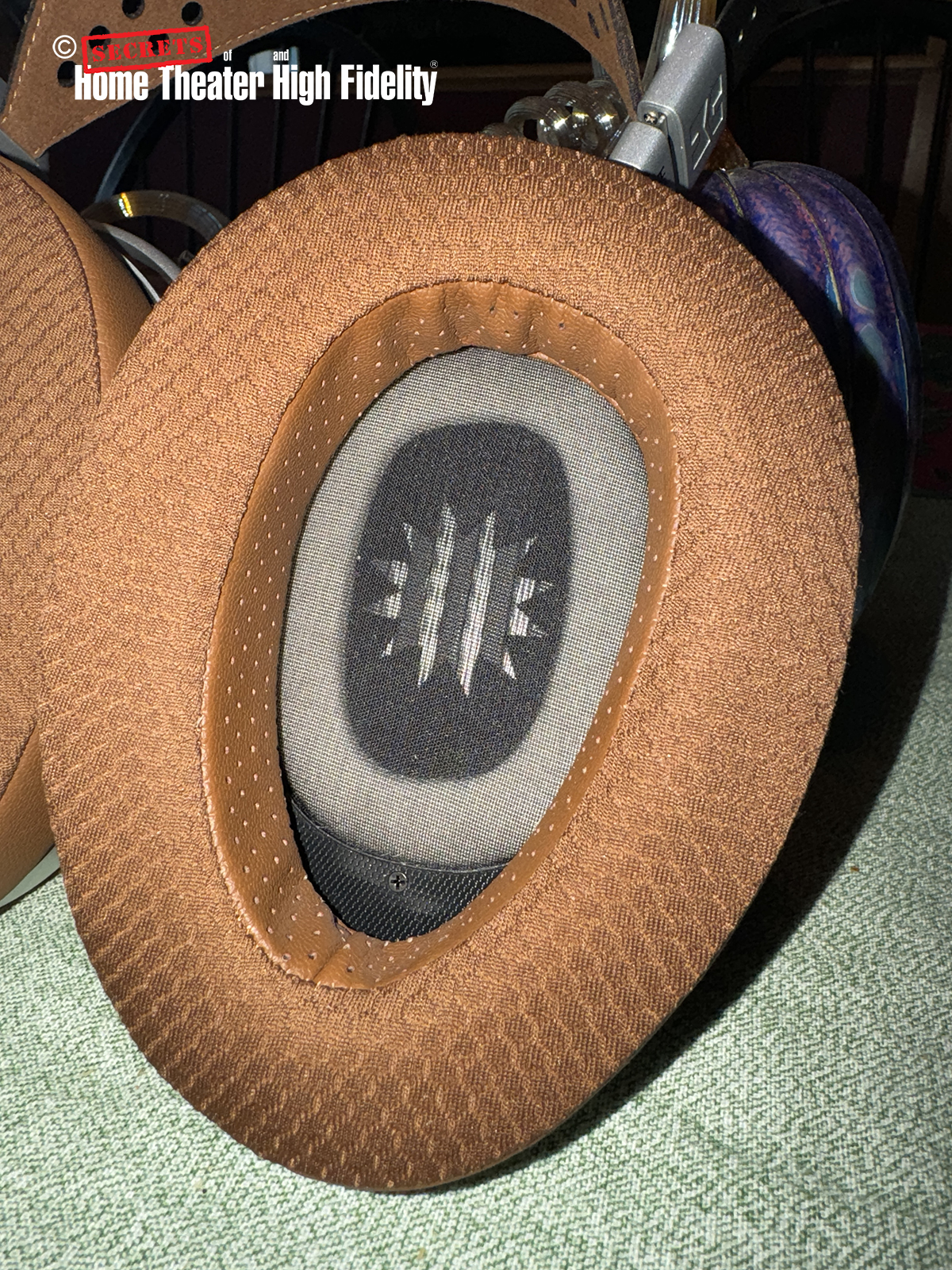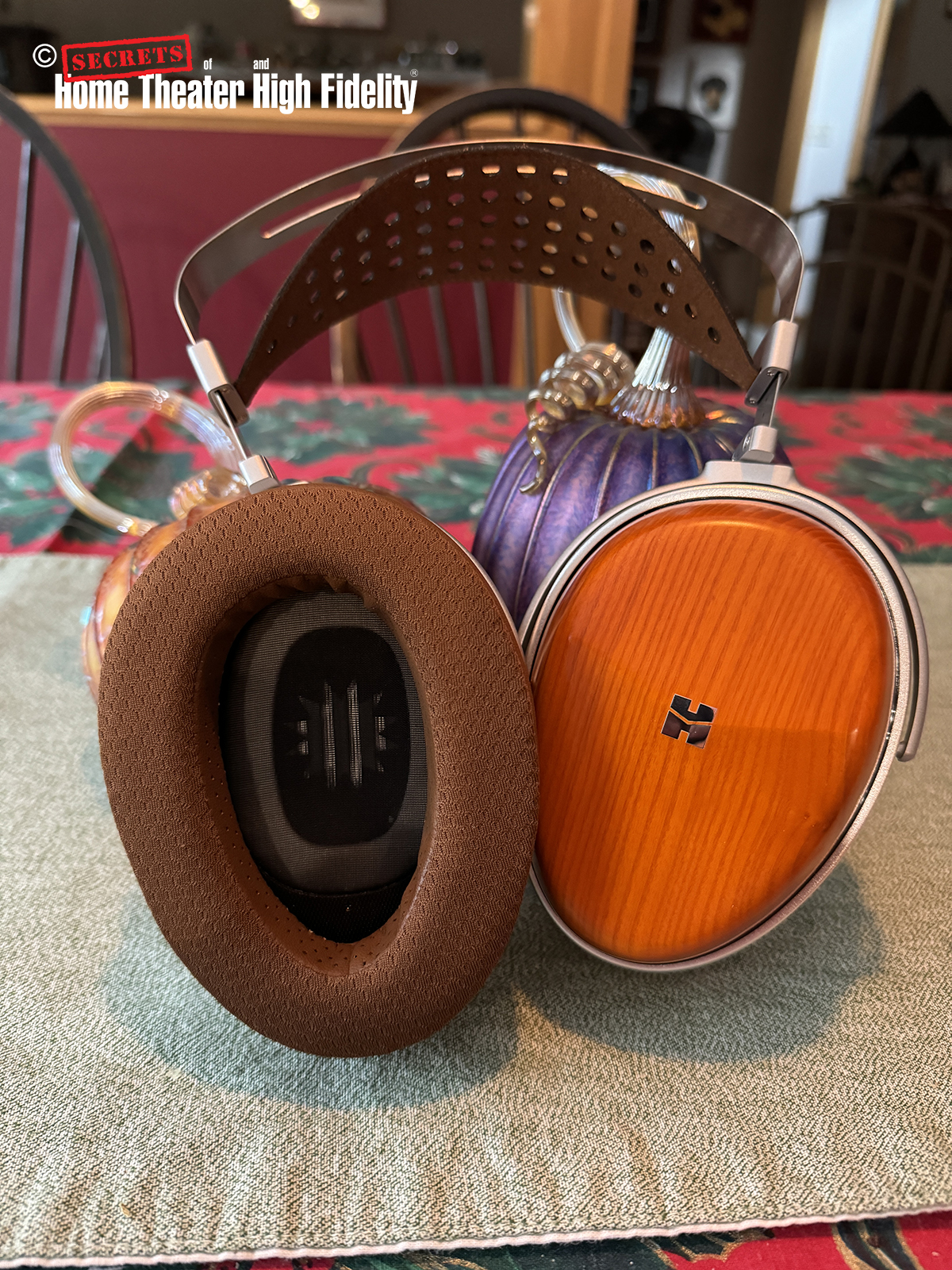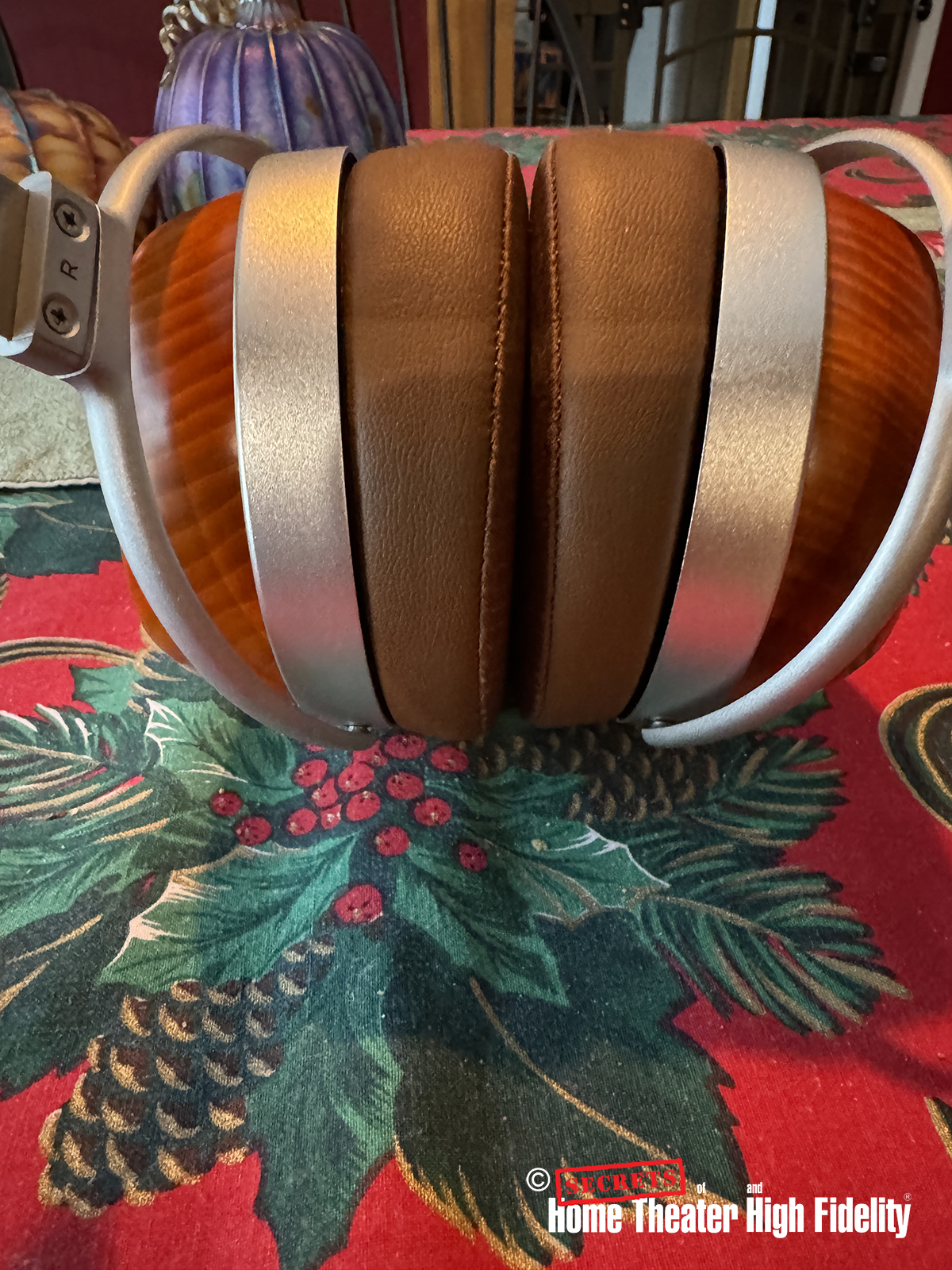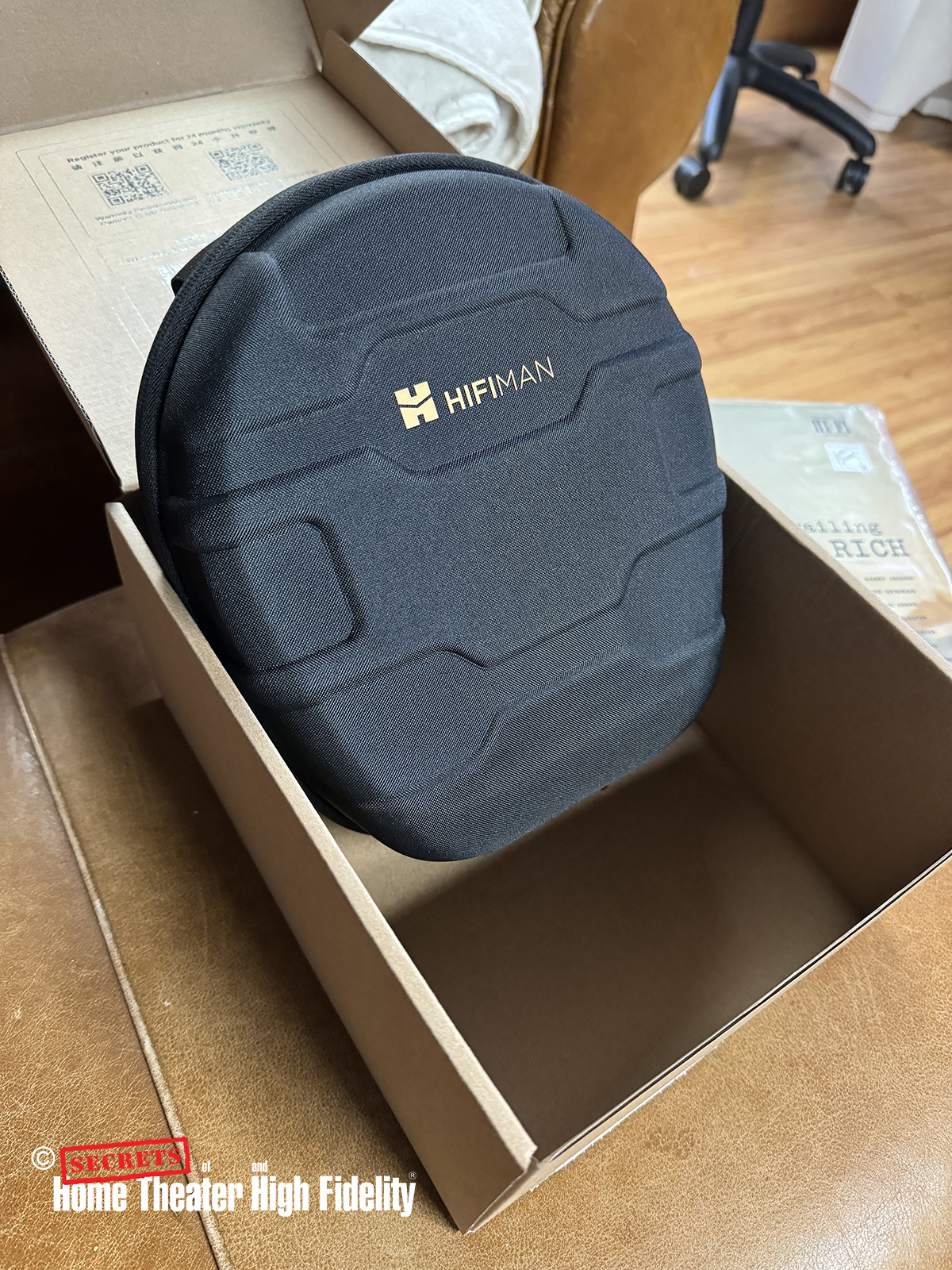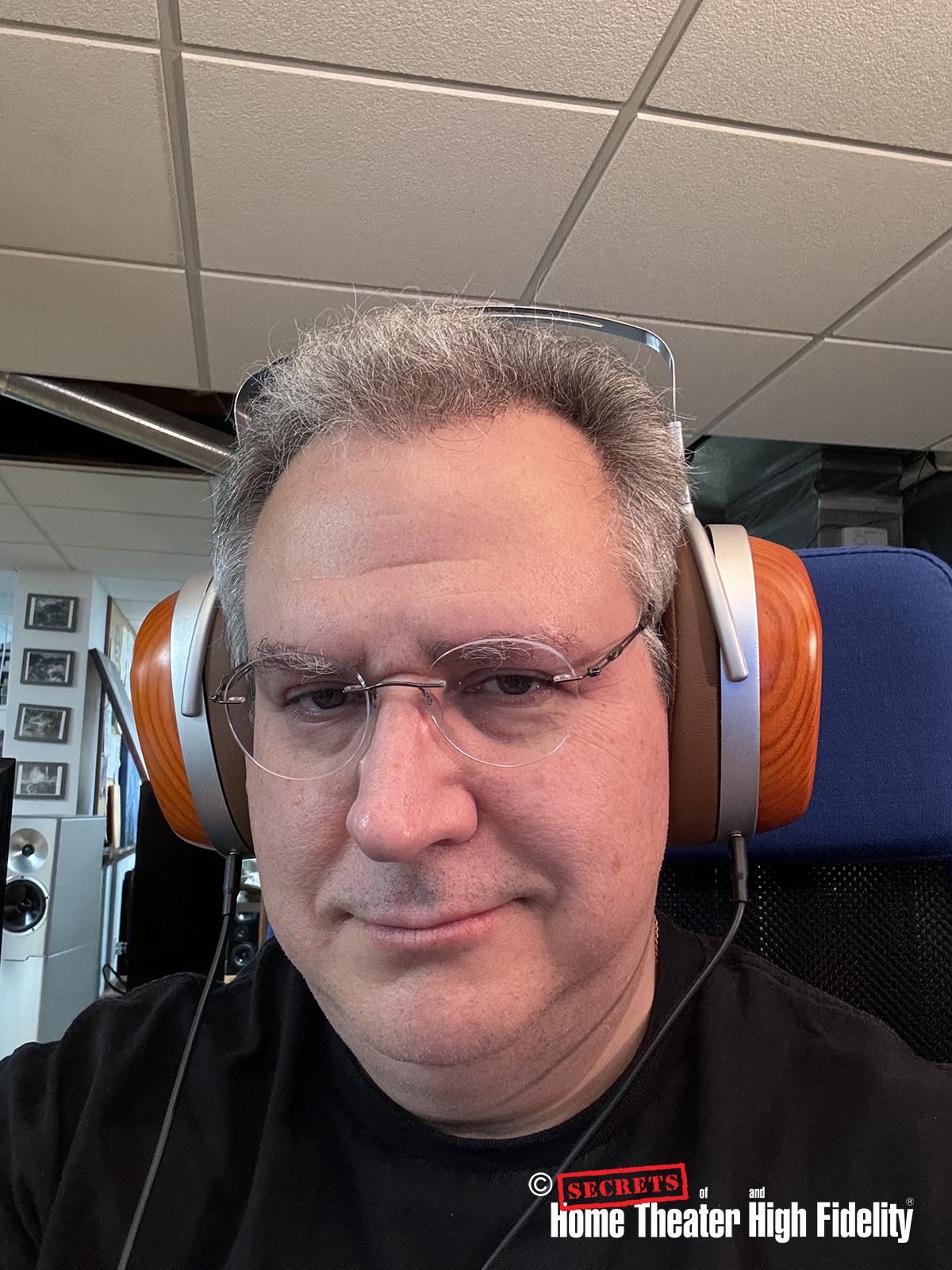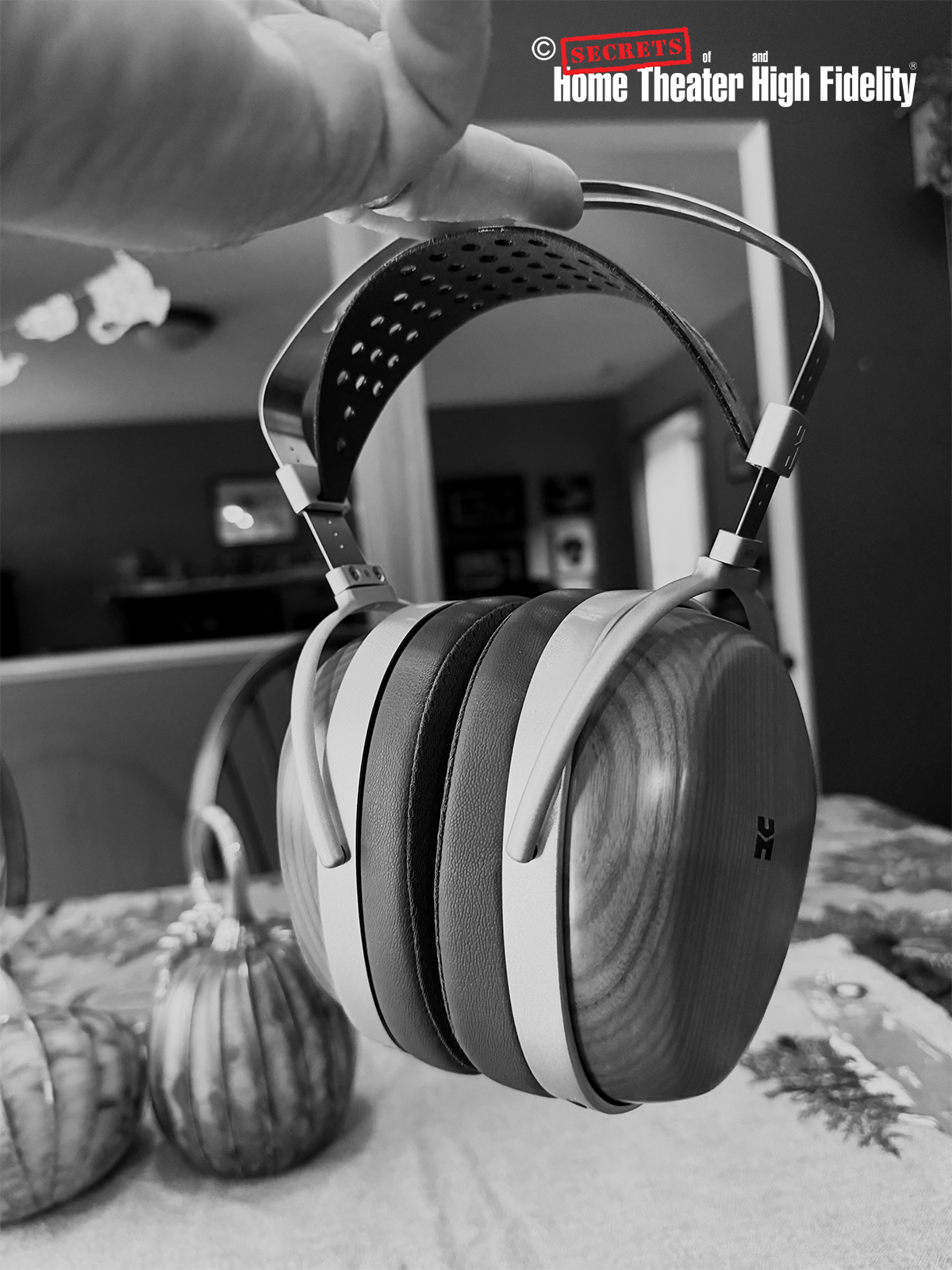HIFIMAN’s marketing materials label the Audivina as “Studio” headphones, implying that they would be suitable for monitoring in a professional music production capacity. I can’t comment on the veracity of that claim but what I can tell you is that the HIFIMAN Audivina are an incredibly appealing set of headphones, both in overall sound signature and in comfort. Personally, I think they are the most enjoyable headphones that the company has put out in quite some time. In my opinion, it’s as if they took my all-time favorite HIFIMAN headphones, the HE1000V2, and found a way to make them closed- back and easier to drive, all while maintaining a similar voicing but imbuing them with a unique depth of soundstage. That’s a “win-win” in my book!
HIFIMAN Audivina Headphone Highlights
- Dynamic, highly engaging sound signature.
- Detailed but not overly bright sounding.
- Vocals seem nicely weighted and balanced.
- Bass is tremendous. Hits hard and deep when called upon while keeping the upper-bass to lower-midrange region sounding clean.
- Very comfortable and not too heavy, inviting long listening sessions.
- Still need a decent dongle DAC/AMP to drive if using with a smartphone.
- The entire design looks sharp and cohesive.
- Yes, non-audiophiles may think you are going to the airport to help land aircraft but ignore them. The sound is worth it.
During CanJAM NYC 2023, I spoke with HIFIMAN founder Dr. Fang Bian about a few new products that the company was launching at the show, one of them was the new Audivina Planar headphones. While Dr. Bian suggested that these headphones were designed more specifically for studio monitoring in mind, it was obvious that the company was targeting audiophiles and decerning listeners too.
When I sampled the headphones both in NYC and later at the Munich High-End show, their sound signature and presentation immediately caught my attention. They gave me a very similar impression as when I listened to my HIFIMAN HE1000V2 headphones, and all while being closed-back cans too. But I couldn’t tell for sure until I got a pair in for review and then I would directly be able to confirm my suspicions.
The fine folks at HIFIMAN graciously sent me a pair of Audivina headphones, along with the equally new EF600 headphone AMP/DAC (review coming soon) to get my impressions. And here, my good friends, is where our story begins!
Type:
Closed-Back Planar Magnetic Over-the-Ear Headphones.
Driver:
90 mm X 70 mm, oval.
Frequency Response:
5 Hz – 55 kHz (manufacturer)
Sensitivity:
97dB SPL / 1mW @ 1 kHz.
Impedance:
20 Ohms.
Weight:
1.04 lbs. (470 grams).
Color:
Brushed metal frame and yolk with tan leatherette head strap, tan earpads, and stained wood earcups.
Accessories:
1.5-meter (4.9 Feet) Headphone Cable with 3.5mm plug
3.0-meter (10.0 Feet) Headphone Cable with 6.35mm plug
3.0-meter (10.0 Feet) Headphone Cable with 4-pin XLR plug
MSRP:
$1,999.00 US
Website:
Company:
SECRETS Tags:
hifiman, audivina, headphones, planar-magnetic, closed-back, audiophile
Getting straight to the point, the headband, frame, and yolk of the HIFIMAN Audivina look identical to what you’d find on the HE1000 V2. They look and feel the same when compared side by side. Not that it is a bad thing by any stretch. That frame architecture is comfortable and works well, and as the saying goes, if it ain’t broke…
It’s when we start to examine the drivers and earcups of the Audivina that things start to get interesting. The oval planar drivers incorporate the latest ultra-thin planar diaphragm which HIFIMAN calls its “NEO Supernano” diaphragm. The company claims it is 80% thinner than previous designs. It also uses their stealth magnet configuration that causes far less interference, within the driver itself, from the generated sound waves. Looking at the drivers, through the earpads, one can see multiple layers of acoustic material with specific shapes cut out to help achieve the desired sound tuning.
Secrets Sponsor
Speaking of sound tuning, the Audivina’s calling card are these large attractive wooden earcups. The earcups allow a combination of enough airspace around the planar driver along with the natural resonance of the pure wood to help set the desired sound signature of the headphones. There also doesn’t seem to be any additional dampening on the inside of the wood so there is not as much isolation from the outside as one might expect from a traditional closed-back headphone.
The thick foam earpads are shaped to be thicker at the back and thinner at the front, helping to ensure a good seal completely around the ears. The pads are swathed in a soft tan leatherette while the contact patches are covered in breathable fabric. The interior of the pads is also covered in leatherette but, in addition, are perforated. The result of all these design attributes is to provide the HIFIMAN Audivina with an expansive soundstage and an experience more akin to open-back headphones.
The weight of the Audivina at 470 grams, while not featherweight, should be completely comfortable for the average person to manage for a few hours. I felt no fatigue from their weight at all. The clamping force of the headphones was quite reasonable and didn’t seem to cause any discomfort to me either.
The headphones come with a nice quality hard shell travel case, two cable sets (one single-ended with a 3.5mm plug and the other balanced with a 4-pin XLR jack), and a 1/4-inch phono plug adapter.
For home listening, I paired the HIFIMAN Audivina with a variety of equipment including:
– The Benchmark Media Systems DAC3 B and HPA4 headphone amplifier.
– The Topping DX9 headphone amplifier/DAC.
– The HIFIMAN EF600 headphone amplifier/DAC.
– The Geshelli Labs Archel 2.5XL headphone amp with J2S DAC.
– The Ferrum Audio OOR headphone amp with HYPSOS power supply.
For mobile use, I paired the Audivina with:
– The Shanling M0 DAP.
– The THX Onyx dongle DAC/amp with my iPhone 15 Pro Max.
All of these solutions were able to drive the headphones with plenty of headroom to spare.
Secrets Sponsor
HIFIMAN’s intent with the Audivina was to create headphones that produce a big enough soundstage to essentially simulate an acoustic environment and not just reproduce the music directly. From that perspective, the Audivina is a resounding success. It’s always a bit of a gamble when a closed-back headphone tries to synthesize a more spacious-sounding result whether it’s through techniques like angling the drivers (like Beyerdynamic and Ultrasone do) or through creative ducting within the earcups, and so forth.
Listening to the Audivina for the first time, that sense of spaciousness immediately struck me. It was completely unexpected from the type of headphones that they appeared to be. The sense of additional space also didn’t strike me as sounding artificial. The experience was honestly a little unusual at first, but after a few days of listening, I really came to enjoy how the Audivina were reproducing all of my music.
The voicing of the Audivina was also very much to my liking. While HIFIMAN bills these headphones as suitable for studio monitoring, they aren’t by any means tuned to be flat. The sub-bass for example is fantastic; elevated by a few dB over what one would consider flat tuning, but the sub-bass did not sound sloppy or oversaturated by any means. It hit hard and you felt it when present in the music, and it wasn’t placed smack inside your skull. Deep acoustic and electronic bass had a sense of dimension and seemed placed outside the earcups, but not at a volume that made you think it was too far back in the mix (unless that was the way it was mixed).
The upper bass to lower midrange region was nicely clear and free from the sloppiness that over- boosted bass can occasionally bring. Electric bass lines and lower register piano notes were reproduced cleanly and with plenty of detail, with no undue bloat to their sound. Transitioning to vocals and most instrumentation that lives in the midrange area, both male and female vocals were reproduced with what I felt was the right level of body and dimension. Higher-pitched female vocals did not exhibit any sort of sibilance or thinness that I could tell nor was there any notable chestiness when the males were at the mic. I have read how a few other reviewers of the Audivina headphones considered vocalists to sound a little recessed for their liking, but I did not get that sense.
The treble region has that trademark airiness and sparkle that HIFIMAN headphones are known for, but I didn’t get the sense that it ventured into being too much or overly out of balance with the rest of the headphone’s voicing. The treble performance of the Audivina is what reminded me most of my HE1000 v2 headphones.
Compared to other closed-back planar headphones that I have on hand like the Dan Clark Audio Aeon 2 Noire, the Stealth, and the Meze Lyric, the HIFIMAN Audivina headphones paint a more expansive sonic picture. Not quite as diffuse (which may not be the best word) as a proper open-back set of headphones, but noticeably bigger than closed. The closed-back headphones I mentioned above are some of my favorites of the breed and don’t sound overly closed-in by any means, but with each one of them, I can tell that there is a rough spatial limit to how big or wide the music gets when I listen. It’s not something that became readily apparent until I compared each of them directly with the Audivina, which exceeds all of them on that one characteristic. If you are a classical music lover, I think you will be particularly impressed with how the Audivina headphones reproduce everything from a smaller chamber ensemble to a full-on orchestra. The added dimension that these headphones imbue on the music makes it seem more like you are listening to good, capable speakers as opposed to headphones.
From a comfort standpoint, the Audivina rank as some of the most comfortable headphones that I have worn over the last few years. The longest session that I put the Audivina through was almost 4 hours of continuous listening. After which I felt completely fine without any sense of weight or pressure discomfort.
Are there things that I didn’t like about the HIFIMAN Audivina? The only thing I could really come up with to ding these headphones on is that they do not isolate very well, both ways. This means that, for a closed-back pair of headphones, they let in more outside noise than you would expect, and they leak more of what you are listening to out into the world than you might desire. Again, neither happens as much as it would for an open-back pair of cans, but on a few occasions while my wife and I were in the living room (she was watching TV and I listening to music on the Audivina headphones) she asked me to turn down the volume because enough of my music was leaking out as to distract her. When I turned it down, enough of the TV volume was leaking into the headphones to be distracting to me. I expect that this is one of the byproducts in the Audivina’s design that allows them to sound as spacious as they do. I think it’s a small penalty to pay for the sound quality and experience that you get, just know going in that (despite the travel case) you will likely not be wearing these on your daily commute. Not unless you want to annoy people with your music leaking out or have them annoy you by your hearing them asking their friends if the local airport is currently hiring ground crew… while giving you the side-eye.
Now on to some actual music…
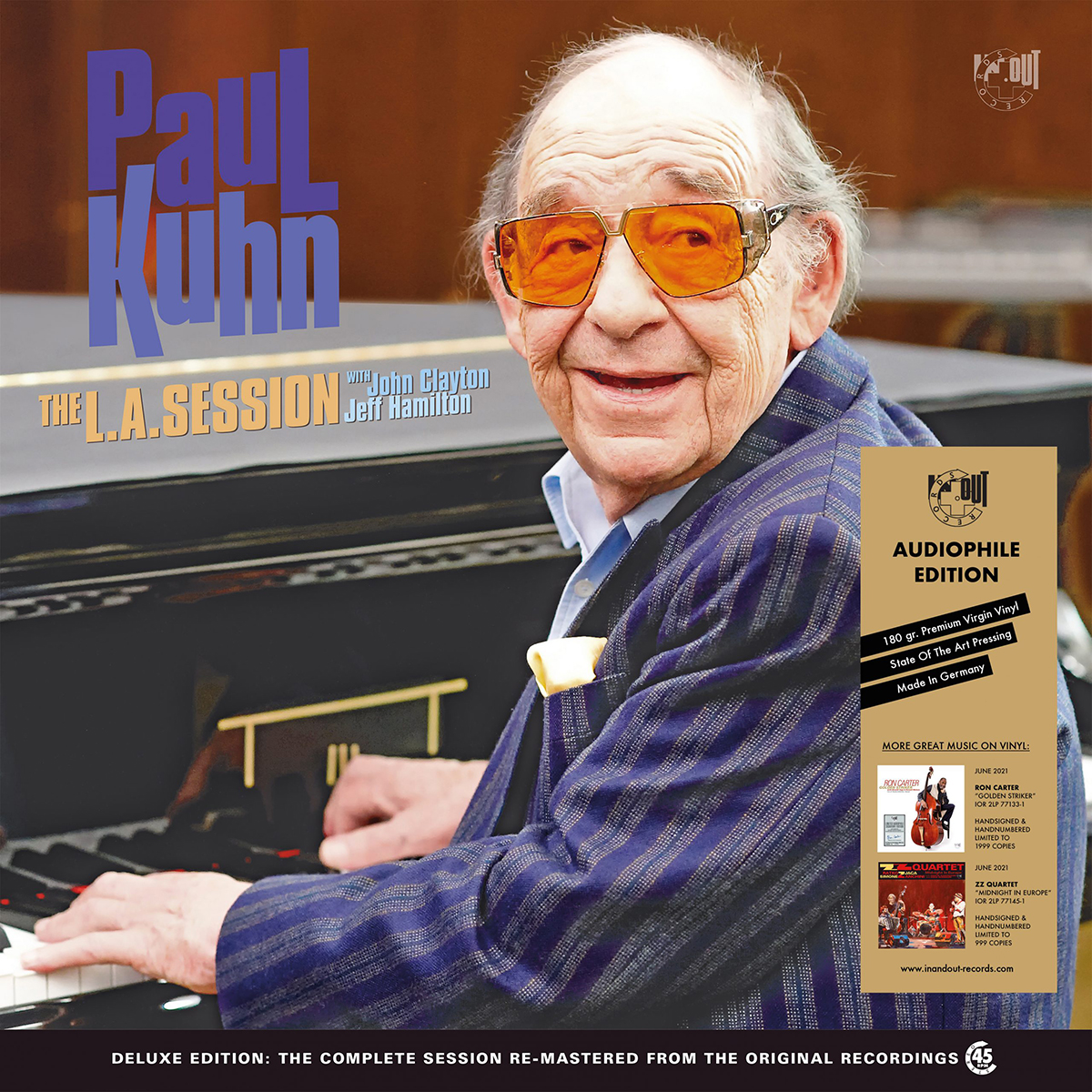
Paul Kuhn, “The L.A. Sessions”, In + Out Records, 2011, 24/96 FLAC via Qobuz.
Listening to this well-recorded and tight little jazz trio over the HIFIMAN Audivina was a treat! The headphones’ extended sound staging gave the recording an added sense of spaciousness that brought the sound out of my head. Listening to the instrumental track “Almost the Blues”, the Audivina made it sound more like the trio was jamming on stage as opposed to in a recording studio, all without sounding like a contrived effect, and without messing with the quality of the sound. Paul Kuhn’s piano playing sounded clean, and the notes rang with plenty of body and natural decay to them. Jeff Hamilton’s drum work sounded crisp with the cymbals especially relaying that brassy, metallic zing that just seemed to float in the air. John Clayton’s acoustic bass sounded deep, punchy, and just a little farther behind the piano and drums in the mix.
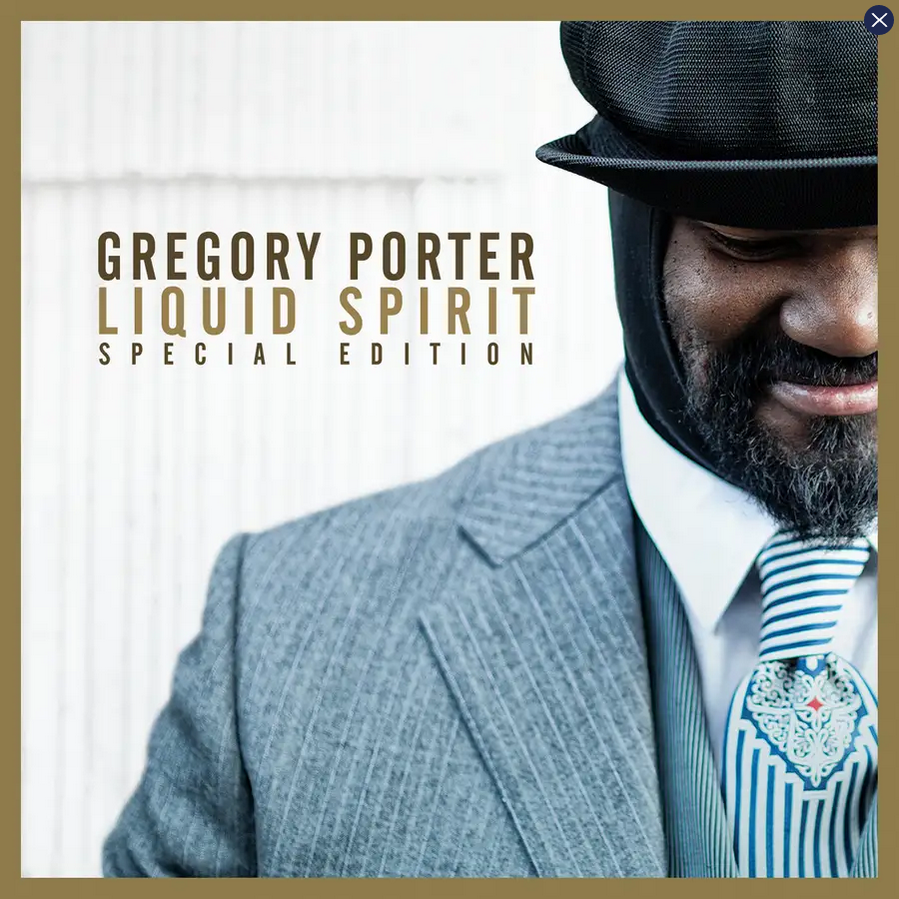
Gregory Porter, “Liquid Spirit”, Universal Music, 2015, 24/44.1 FLAC via Qobuz.
Shifting to Gregory Porter’s decidedly soulful vocals on the track “No Love Dying” from his Liquid Spirit album. The Audivina headphones keep Porter’s voice sounding rich and full without any hint of chestiness. The headphone’s spatial qualities add a bit of airiness to his delivery, pulling the vocals a little away from my head. Maybe that is the quality that some others mistake for being “recessed.” My brain interprets it as sounding like a more natural delivery and less like I was wearing headphones. Every bit of his vocal performance still sounds as detailed as I remember it, just less tightly affixed to my head. All the other instruments in this well-produced recording sound as good as they should. The sultry little saxophone solo in the middle of the song just sounds so sweet and detailed with some of the player’s breathing being clearly audible.

Ann Hampton Callaway, “Fever: A Peggy Lee Celebration”, Palmetto Records, 2023, 24/96 FLAC via Qobuz.
Moving to Ann Hampton Callaway’s deep breathy vocals as she channels Peggy Lee (with a spritz of Patricia Barber, if you were to ask me) on the track “Black Coffee.” A total torch song, the HIFIMAN Audivina makes this track sound like it’s being performed in a dark, slightly seedy little jazz club. Although Hampton Callaway’s vocals are a little on the deeper range of the spectrum, there is still a sense of airiness in their delivery through these headphones. With plenty of body but just a little more alive-sounding. The accompanying piano, bass, drums, and electric guitar all sound equally excellent with plenty of dimension and clarity.
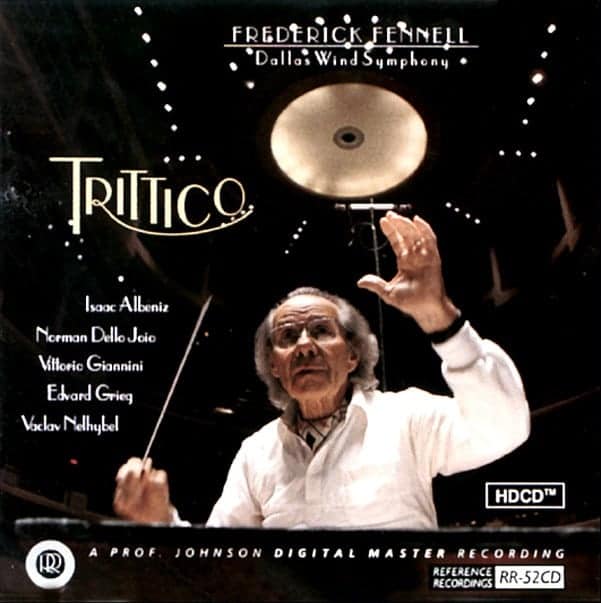
Frederick Fennell & Dallas Wind Symphony, “Trittico”, Reference Recordings, 2012, 16/44.1 FLAC via Qobuz.
Alright, leaving jazz in the rearview mirror, how does the Audivina handle a bombastic Symphonic Band work like Trittico? Pretty darn well I’d say. Oftentimes on other closed-back headphones, this particular version of Trittico comes off sounding a little flat and two-dimensional. These headphones spread the orchestra out, almost giving the impression that they are playing in a music hall. Yet this sense of expansion does not take away from the intensity and detail of the performance. Playing the “Allegro maestoso” track, I hear all the brassy sharpness of the horn section, the big bass drum hits are almost earth-shaking in their intensity, and the military crispness of the drumming comes through clearly and all with proper tonality. In a quiet solo passage two-thirds of the way through, there is some very delicate oboe, flute, and triangle playing, and the Audivina headphones properly place each instrument in space and let me enjoy all the subtle details of their respective performances. As a matter of fact, almost all classical music that I listened to through the Audivina benefited in this way, getting an extra sense of grandness and scale! As I mentioned earlier, if you are a classical music lover and you are looking for some serious listening headphones, the Audivina should be on your shortlist to audition.
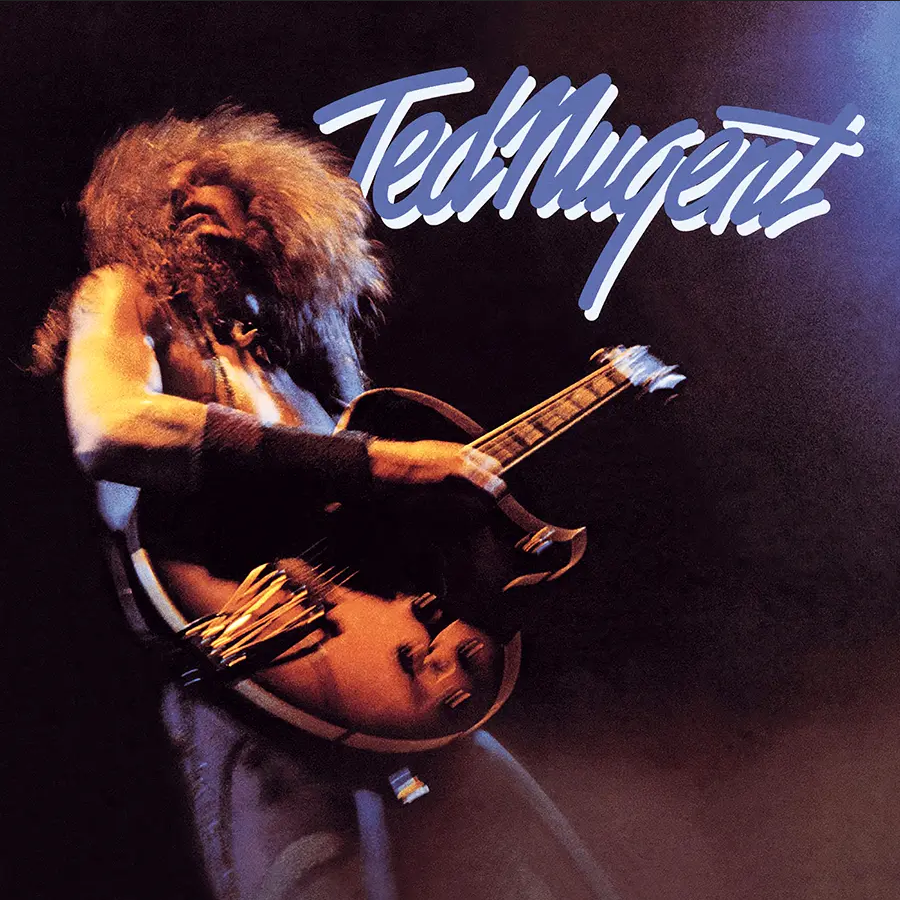
Ted Nugent, “Ted Nugent”, Epic Records/Legacy, 1975, 16/44.1 FLAC via Qobuz.
So does a headphone I am recommending for classical music lovers have any sort of chance if, say, I get the urge to listen to a classic album by the “Motor City Madman?” Heck yes, it does! Pulling up Ted Nugent’s hard-driving debut solo album and pressing play on the track “Queen of the Forest” just puts a huge grin on my face. Good extended bass performance in a headphone does a lot to help classic rock come alive when listening solo and closed-back cans traditionally have had an advantage here. Yet while the bass may be there to punch up the power in the rhythms, there isn’t a ton of dimensionality in much studio or live-recorded classic rock, with some notable exceptions. So, while you’ll get some intimacy and immediacy listening to classic rock over good headphones, you typically won’t get much in the way of space. But the Audivina seems to turn this concept on its ear, and while “The Nuge” and his band don’t quite sound like they are playing live at the old Cobo Hall through these headphones, they do sound bigger and more spread out without losing any of their drive and intensity. The opening kick drum and guitar interplay to the track still sound deep and powerful. The driving electric bassline is deep, punchy, and easy to follow, and Ted Nugent’s guitar (a Gibson Birdland through Marshall stacks of all things) has that distinctive searing and grungy bluesy sound right at the forefront of the mix. And both Ted’s and his background singers’ vocals are not right up against my head giving the presentation a more natural sound. It’s official then, the Audivina headphones can rock with the best of them!
The HIFIMAN Audivina are some of the nicest looking and most unique sounding headphones that I have heard in the $2K price bracket. Highly recommended!
- Extremely comfortable for long listening sessions.
- More spacious sound. Somewhere between traditional open and closed-back cans.
- Powerful, extended bass. Nicely balanced midrange and sparkling highs.
- They look beautiful.
- Easy to drive.
- Slightly better isolation. It may not be possible, due to the design, and still keep the sound qualities.
The HIFIMAN Audivina are a rather special pair of headphones in my humble opinion. They look beautiful; they are extremely comfortable to wear for long stretches; they are voiced in such a way that I think many people will find appealing, and the added spaciousness that they lend to music, via their unique design, makes them unlike any other closed-back headphone out there. It took me a few days of living with the Audivina headphones to get used to that expanded sound field that they produce, but once I did, I didn’t want to give it up. Especially if you are a classical music listener, these headphones should really make you smile.
While they are categorized as closed-back headphones, their unique design means that they share some of the sound leakage characteristics of open-back cans, only to a smaller degree. Just be aware that if you want complete isolation from a headphone, these will not cut it. However, if isolation is less of a concern and you are mainly looking for a satisfying musical experience, then these might just be the ticket! If you are looking in the $2K range for some new headphones, I highly recommend the HIFIMAN Audivina!


